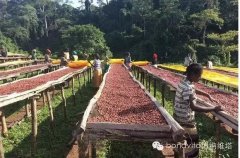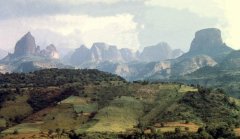Explanation of professional terms related to coffee roasting and coffee roaster
\ rear burner
A device that uses a high heat energy burner to reburn the smoke generated by a coffee roaster to achieve smoke suppression. At the same time, it can reduce the smell.
\ net basket
The silver skin of the Fujiga machine dust collector is a stainless steel basket. Can undertake a larger amount of silver than the standard.
\ transformer
The device for converting electric power into variable voltage and variable ripple number has the characteristics of control, stability, energy saving and so on.
\ ignition transformer
Ignition device. The burner used in the roaster to ignite.
\ stone remover
A device for sorting and removing stones and foreign bodies mixed with coffee beans according to specific gravity.
Large-scale maintenance
Guess dismantling and cleaning. Maintenance is carried out according to budget. And there is a half-year guarantee for maintenance products.
\ stir
Stir and mix.
\ cutting sharpening knife
The grinder that grinds coffee beans cuts them up by cutting. It is suitable for Italian coffee and fine research.
\ cup test
In order to test the quality of coffee, coffee beans are roasted and then injected with hot water directly into coffee powder to observe their changes to identify coffee.
\ lubricating oil
Industrial grease. Now take the food grade as the standard.
\ THERMAL
A safety device for overload protection of a motor.
\ dust collector
The dust collecting device is used to recover the silver skin discharged by the roaster.
\ inner pot
A drum for roasting coffee in a roaster.
\ exhaust alone
The standard roaster is baked when the exhaust and cooling are driven by a motor and the exhaust is separated from the cooled motor. It can improve the exhaust efficiency and the performance of continuous baking.
\ Longtian Yoshimoto works
Fujika Co., Ltd. Fuji Co., Ltd. Apply the mechanical technology accumulated over the years to the roaster and work together to develop a new type of roaster.
\ exhaust baffle
Used to control the heat flow in the roaster.
\ midpoint
Drop the coffee beans to the lowest temperature after putting them in.
Depending on the input temperature, the temperature of the midpoint will also change, so the baking process is controlled.
\ direct fire type
The side wall of the inner pot with raw coffee beans is punched and processed, and the fire of the burner will be in direct contact with the coffee beans, so it is called direct fire type.
For details, please refer to "Baking fun" → "Coffee Roaster Mechanical principle".
\ iron fan
Compared with the aluminum fan (6 blades), the iron fan (8 blades) can increase the air volume by about 20%. Distinguish the use according to the resistance of the chimney and the special roaster.
\ double inner pot
So that the fire will not directly touch the inner wall to make the inner pot into a double layer, with an air layer in the middle, and can be baked with a softer heat source.
\ hot air type
The side of the inner pot is completely covered by iron, the back of the burner is punched, and the heat source generated by the lower burner is punched into the interior of the inner pot from the back of the inner pot, and baked with the hot air generated by the burner.
For details, please refer to "Baking fun" → "Coffee Roaster Mechanical principle".
\ exhaust / exhaust pipe
Smoke emitted during baking and its discharge pipe.
\ burst (1 burst 2 explosions)
When the moisture in the coffee bean disappears and the tissue of the coffee bean is destroyed and expands, it will send out "patter"! "bouncing! "" patter! "the voice. This is the burst. The first burst is called "1 explosion" and the second is called "2 explosion". The sound of the second burst is smaller than that of the first burst, but the sound of the second burst is less than that of the first burst.
Important Notice :
前街咖啡 FrontStreet Coffee has moved to new addredd:
FrontStreet Coffee Address: 315,Donghua East Road,GuangZhou
Tel:020 38364473
- Prev

Delicious coffee. Five tips. Tasty coffee.
Coffee quality: to comment on the quality of a cup of coffee, you should have an in-depth understanding of the basic information of coffee, such as the variety of coffee, the place of production and regional characteristics of coffee beans, the height of planting, the process of handling raw beans, bean age, purity, size and water content. However, such detailed information is usually not available, so taste and aroma become the final criteria, and experience becomes the conclusion of coffee.
- Next

The honey process is called Honey Process or Miel process.
Honey processing, known as Honey Process or Miel Process, is used in coffee gardens in Costa Rica, Panama and Taiwan. Honey treatment is an intermediate treatment between solarization and washing. It keeps the coffee washed clean, although the brightness drops bright, but
Related
- Beginners will see the "Coffee pull flower" guide!
- What is the difference between ice blog purified milk and ordinary milk coffee?
- Why is the Philippines the largest producer of crops in Liberia?
- For coffee extraction, should the fine powder be retained?
- How does extracted espresso fill pressed powder? How much strength does it take to press the powder?
- How to make jasmine cold extract coffee? Is the jasmine + latte good?
- Will this little toy really make the coffee taste better? How does Lily Drip affect coffee extraction?
- Will the action of slapping the filter cup also affect coffee extraction?
- What's the difference between powder-to-water ratio and powder-to-liquid ratio?
- What is the Ethiopian local species? What does it have to do with Heirloom native species?

